No products in the cart.
Return To Shop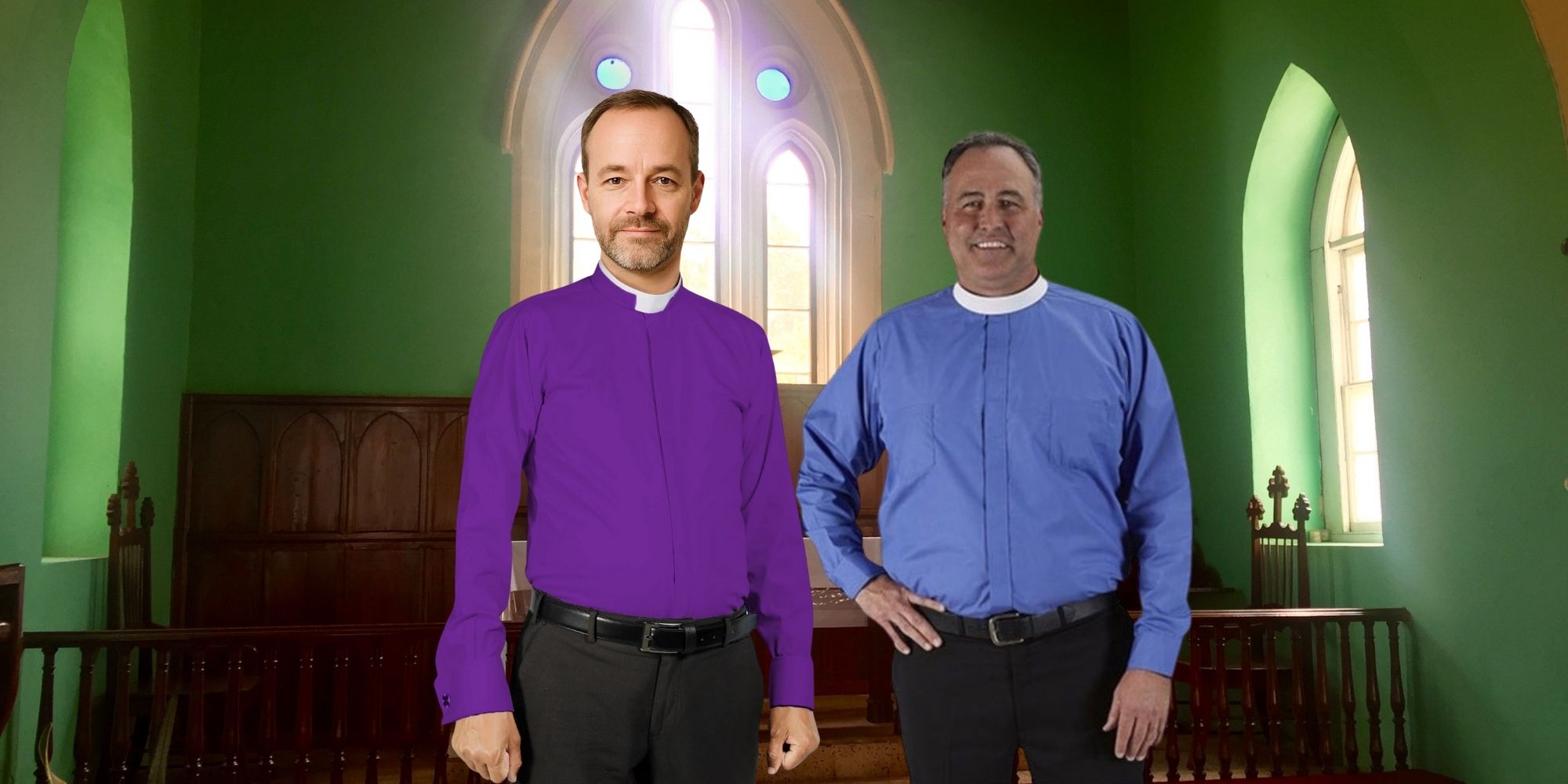
When you see a man or woman wearing a clergy collar, you immediately know that person is part of the church. The small white band around the neck may look simple, but it carries a very big meaning. It tells the world that this person has given their life to serve God and to care for people. Over the years, the clergy collar has grown into a powerful mark of spiritual authority, trusted by millions across different Christian traditions.
Both priests and pastors wear collars, though not always in the same way. A priest collar is often more formal and tied to long church traditions, while a pastor collar is usually simpler and designed for daily ministry and preaching. Men and women alike wear the collar today, and though the designs may vary, the message is always the same: a life set apart for faith.
In this article, we will take a journey through the history, meaning, and different styles of the clergy collar. Along the way, we will see how it became a lasting symbol of spiritual authority.
The Origins of the Clergy Collar
The story of the clergy collar begins not in the early church but in the 1800s. Before that time, clergy usually dressed much like everyone else. They wore dark suits or robes, and there was no single item that marked them as different.
That changed with a Scottish minister named Rev. Donald McLeod. In the 19th century, McLeod began wearing a small white band of cloth at the neck. It was not meant to be fancy. In fact, it was quite simple. But it set clergy apart from the rest of society. Soon, other ministers in Scotland adopted the same style.
The collar quickly spread across Europe and later to the rest of the Christian world. What started as a practical piece of clothing became something sacred. The white band came to symbolize purity, light, and a life devoted to God. People could now recognize a priest or pastor right away, whether at church, in the community, or on the street.
What the Clergy Collar Represents Today
Today, the clergy collar is far more than just part of an outfit. It is a visible sign of calling. It reminds the person wearing it, as well as the people who see it, that this is someone set apart for holy work.
The collar represents humility because it reminds clergy that their role is not about power but about service. It also represents authority, because the church has given them the responsibility to lead, teach, and guide. People often trust someone wearing a collar because they know the person is there to help.
The color itself also has meaning. The white clergy collar symbolizes purity and peace. It stands out against the black shirt or cassock, which symbolizes dying to self and living for Christ. Together, the black and white carry a deep message of faith.
Who Wears the Clergy Collar?
Many people think collars are only for priests, but that is not true. Over time, the use of the clergy collar has spread across many different traditions.
Priests in Catholic, Anglican, and Orthodox churches wear collars as part of their daily attire. Pastors in Protestant, Lutheran, Methodist, and Evangelical churches also wear collars, though often in different styles. Ministers, bishops, deacons, and chaplains may all wear collars at certain times.
Both men and women wear collars today. A male priest may wear his collar with a cassock or clergy shirt. A female pastor may wear hers with a blouse, clergy dress, or specially designed pastor shirts with collar. The design may change, but the message does not: both are equally called to ministry.
The clergy collar is not worn in the same way by every rank of clergy. Within both Catholic and Protestant traditions, each rank carries its own meaning, and the collar plays a role in showing identity and responsibility.
- Deacons – Often the first step in ordained ministry. Deacons may wear a clergy collar, usually in a simple form such as the tab collar. This shows they serve but are not yet priests.
- Priests – The most common rank associated with collars. Priests wear the Roman collar, Anglican collar, or tab collar depending on tradition. Their collar identifies them as ministers of the sacraments.
- Bishops – Bishops wear the same style collars as priests but often with additional vestments like the purple clergy shirt, chimere, or rochet to distinguish their higher office.
- Pastors – In Protestant traditions, pastors use the collar mainly as a sign of preaching and shepherding authority. They may prefer tab collars or removable collars for comfort in everyday ministry.
- Ministers and Chaplains – Ministers serving in schools, hospitals, or the military wear collars as a visible mark of their calling. It helps people instantly recognize them as spiritual caregivers, even outside the church.
The Priest Collar and Its Religious Role
The priest collar is perhaps the most traditional form of the clergy collar. It is deeply tied to the history of the Catholic and Anglican churches.
There are several common styles of priest collars. The Roman collar is a full white band that circles the neck. The tab collar has a small white square at the front of the shirt, which slips into a special opening. The Anglican collar is wider and often requires small collar studs to hold it in place.
For priests, it is part of traditional priest clothing that includes cassocks, vestments, and robes. The collar shows their authority to celebrate the sacraments such as the Eucharist, baptism, and confession. It also connects them with centuries of church history and reminds them that their priesthood is not their own but a gift of the church.
The Pastor Collar and Its Meaning in Ministry
While priests wear collars tied to sacraments and tradition, pastors often wear collars as a sign of their role as shepherds and teachers.
The meaning of pastor collar is slightly different. It shows that the pastor is called to preach, to lead worship, and to guide the congregation. It is not always tied to sacramental authority but more to pastoral care and preaching.
Many pastors prefer collars that are simple and practical. A removable pastor collar can be taken off after services, making it easier for daily wear. Pastor shirts with collar are also popular, since they combine the professional look of clergy clothing with the comfort needed for long ministry hours. The tab collar is a favorite among pastors for its easy design.
Pastor Collar vs. Priest Collar: Key Differences
Although both are forms of the clergy collar, there are some clear differences between the priest collar and the pastor collar.
The priest collar is usually more formal. It is tied to the history of the Catholic and Anglican churches and to the celebration of sacraments. It is often worn with robes, cassocks, and vestments.
The pastor collar, on the other hand, is usually simpler. It is used more in Protestant and Evangelical traditions. It may be removable, detachable, or inserted into a shirt. It is often worn with suits or casual clergy shirts rather than full robes.
In short, the priest collar speaks of sacramental authority, while the pastor collar speaks of preaching and shepherding. Both, however, remain strong symbols of spiritual leadership.
Do Male and Female Clergy Wear the Same Collar?
One common question is whether men and women wear different styles of collars. The answer is no. Both men and women clergy wear the same clergy collar designs.
The difference is usually in the clothing that goes with the collar. Men may wear collars with black suits, cassocks, or clergy shirts. Women may wear collars with dresses, blouses, or tailored clergy shirts made for women. Many modern suppliers now create stylish options for female clergy, but the collar itself remains the same.
This equality is important. The collar is not about gender. It is about the call to serve. By wearing the same collar, both male and female clergy show that they share the same authority and the same responsibility in ministry.
Types of Clergy Collars Worn Today
Today, clergy have many options when it comes to collars. Some prefer traditional styles, while others choose more modern and practical ones.
The Roman collar is still popular among priests. The tab collar is often used by both priests and pastors for its simplicity. The Anglican collar gives a formal look and is still used in many churches.
There are also detachable clergy collars, which can be removed and replaced. These are useful for washing or switching between shirts. A removable pastor collar works the same way but is often built into a shirt design.
This variety allows clergy to choose what works best for them, whether for Sunday services, daily ministry, or special occasions. Some want formality, while others need comfort. But no matter the type, the collar always carries the same meaning.
Clergy Collar in Everyday Ministry
The clergy collar is not just for Sunday mornings. It plays an important role in everyday ministry.
When clergy visit hospitals, the collar brings comfort to the sick. Patients and families often feel reassured when they see a priest or pastor wearing the collar. In prisons, the collar signals hope and spiritual care. In schools, it shows authority and leadership.
In the community, people can quickly recognize someone in a collar as a person of faith and guidance. Even at weddings, funerals, and baptisms, the collar helps mark the role of clergy as spiritual leaders.
To keep up with these many roles, clergy often wear different styles. Some choose pastor shirts with collar for comfort. Others wear polos with small tab collars for a more casual look. For formal events, priests may wear traditional priest clothing with full collars.
Why the Clergy Collar Still Matters
In today’s modern world, some may wonder if the collar is still necessary. After all, society has changed, and many people no longer wear uniforms in daily life. But the clergy collar continues to hold deep meaning.
It matters because it gives identity. It helps people know who the clergy are and what they stand for. It matters because it shows authority, not in a harsh way but in a spiritual sense. And it matters because it reminds clergy themselves of their mission to serve.
The collar may be a small piece of clothing, but its meaning is large. It continues to stand as a sign of faith, service, and spiritual authority in a changing world.
Why Choose Holy Clergy for Your Clergy Collar
Choosing the right clergy collar is about more than style, it’s about comfort, quality, and honoring your ministry. At Holy Clergy, we understand the spiritual and practical significance of the clergy collar, which is why we craft each piece with care for both priests and pastors.
Our collection includes Roman collars, tab collars, and detachable collars, designed for daily ministry, preaching, or formal ceremonies. For female clergy, we also offer collars paired with clergy dresses, blouses, and pastor shirts, ensuring comfort without compromising tradition.
What sets Holy Clergy apart is the attention to detail. Each collar is made with durable materials, precise stitching, and thoughtful designs that respect the sacred role of clergy. Whether you need a collar for long church services, hospital visits, or community outreach, Holy Clergy collars provide both elegance and practicality.
By choosing Holy Clergy, you’re not just wearing a piece of clothing you’re embracing a symbol of spiritual authority, service, and dedication. Our collars help clergy members focus on what matters most: guiding, preaching, and serving their communities with humility and devotion.
Conclusion
The clergy collar began as a simple fashion choice in 19th-century Scotland. Over time, it became a powerful symbol of spiritual authority. Today, both priests and pastors wear collars, though in different ways. The priest collar is tied to sacraments, tradition, and formal church clothing. The pastor collar reflects preaching, shepherding, and daily ministry. Both men and women clergy wear the same collars, showing that the call to serve is equal.
From white clergy collars to detachable clergy collars, from cassocks to pastor shirts with collar, the styles may differ but the meaning remains the same. The collar is a sign of humility, service, and dedication to God’s work.
So the next time you see a small band of white around someone’s neck, remember this: it is not just clothing. It is a symbol of faith that has stood the test of time.
Frequently Asked Questions (FAQs)
What is a clergy collar called?
The clergy collar is also known as a clerical collar or Roman collar. Some traditions simply call it the priest collar or pastor collar, depending on who is wearing it. At Holy Clergy, you’ll find many types of collars, including tab collars, Roman collars, and detachable collars, designed for both priests and pastors.
Can anyone wear a clergy collar?
No, the clergy collar is reserved for ordained clergy such as priests, pastors, ministers, deacons, and bishops. It is a mark of spiritual authority, so it should not be worn casually by people outside of ministry.
What does the clergy collar symbolize?
The clergy collar symbolizes humility, service, and spiritual authority. The white band stands for purity and dedication to God. It also helps the community instantly recognize someone as a spiritual leader. Whether it’s a priest collar or a pastor collar, the meaning is the same: a life devoted to faith and ministry.
Do female priests wear clerical collars?
Yes, absolutely. Female priests and pastors wear the same clerical collars as men. The collar is not about gender, it’s about calling. Many women choose pastor shirts with collar or clergy dresses that hold the same tab or Roman collar design.
Where can we buy a clergy collar?
Clergy collars are available at church supply stores, religious outfitters, and trusted online shops. At Holy Clergy, you can find a wide range of collars, like the white clergy collar, detachable clergy collar, and removable pastor collar, all crafted for comfort and durability. Whether you are a priest, pastor, or minister, you can choose a style that fits your tradition and daily ministry needs.

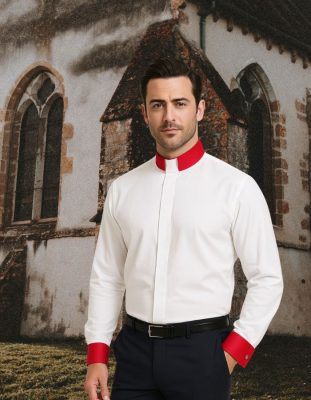
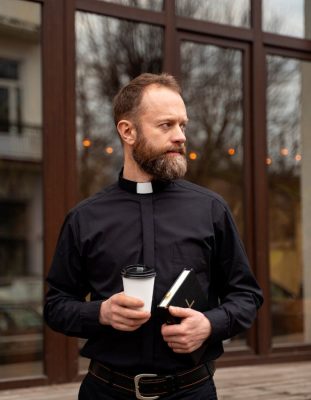




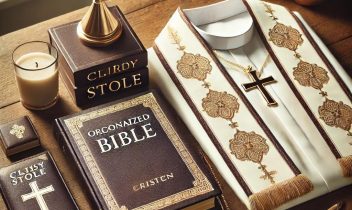

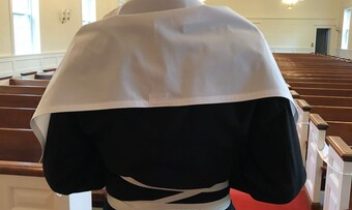
Recent Comments